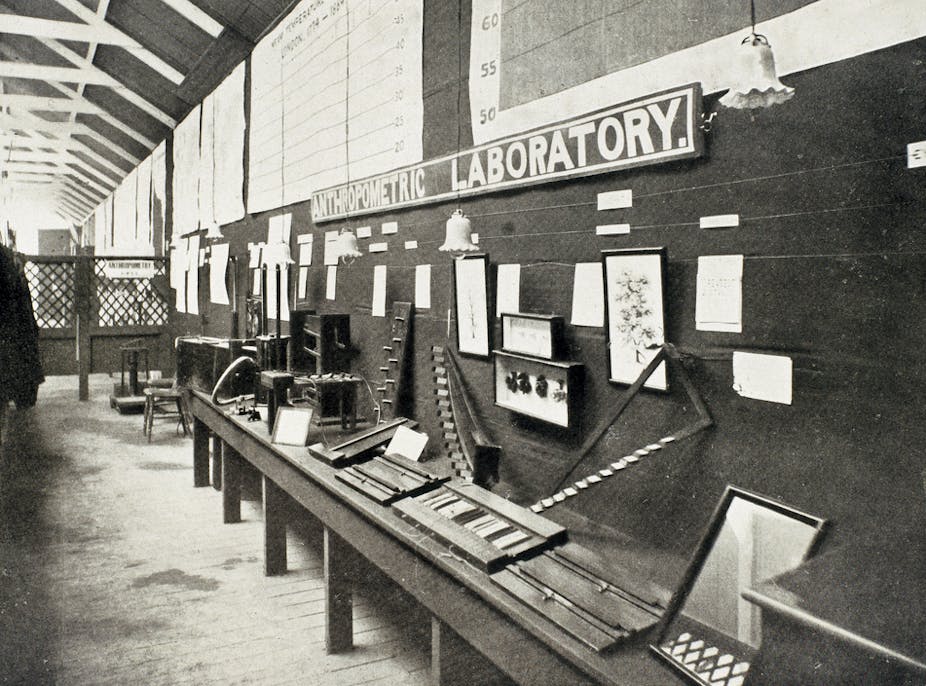Eugenics — the science of improving the race —was a powerful influence on the development of Western civilisation in the first half of the twentieth century. And Melbourne’s elite were among its chief proponents.
In this period all the institutions and practices of modern societies came into being and eugenics played an important role in moulding them.
As the home of the Australian federal government in the early decades of the twentieth century, Melbourne was the ideal place for activists wishing to pursue a national eugenic agenda.
The role of the University of Melbourne
An important leader of this loose alignment of like-thinking middle class academics and doctors was the Professor of Anatomy at Melbourne University from 1903 to 1929, Richard Berry. His influence extended beyond the university, which still has a building bearing his name, to some of the most important members of the city’s society.
Although there was a short-lived Eugenics Education Society, until the founding of the Eugenics Society of Victoria in 1936 eugenicists operated primarily as a pressure group within the university, the education department and various government agencies and committees.
Legalising eugenics
Important legislation, in the form of three Mental Deficiency Bills, was presented to the parliament in 1926, 1929 and 1939 by the Premier Stanley Argyle, a friend and colleague of Berry.
The bill aimed to institutionalise and potentially sterilise a significant proportion of the population - those seen as inefficient. Included in the group were slum dwellers, homosexuals, prostitutes, alcoholics, as well as those with small heads and with low IQs. The Aboriginal population was also seen to fall within this group.
The first two attempts to enact the bills failed not due to any significant opposition but rather because of the unstable political climate and the fall of governments.
The third in 1939 was passed unanimously, but not enacted in the first instance because of the outbreak of war and, later, due to the embarrassment of the Holocaust.
Other state parliaments were inspired to also institute such legislation by Berry’s many town hall lectures across the nation.
Important national Royal Commissions in the 1920s also recommended a range of eugenic reforms including measures relating to child endowment, marriage laws and pensions.
National survey
Perhaps the culmination of all this activity was the commissioning of a national survey of mental deficiency by the Federal Minister for health, Sir Neville Howse, in 1928.
It was carried out by Berry’s colleague, the Chief Inspector for the Insane in Victorian William Ernest Jones. In it, he claimed that the statistics collected showed the incidence of mental deficiency was rising, mainly due to genetics, and was more often found in the working class. He concluded that it required urgent government action along the lines previously championed by Berry. It was tabled before parliament and created a sensation in the press.
Little happened, however, as the government fell and the Great Depression hit the nation. The Director of the Department of Health, John Cumpston, claimed that the dire financial situation destroyed any chance of such a reform.
Eugenics in education
Another important influence of eugenic thinking was found in the development of post-primary education in Victoria.
The most important educationalists involved in the radical developments in the development of secondary and technical schools in Victoria were either active in eugenic circles or closely associated with Berry.
Perhaps the most influential, the first director of education, Frank Tate, was associated on most important government bodies with Berry and strongly supported his research on head size and, on occasions, introduced his public lectures.
Others, such as the first Director of the Carnegie funded Australian Council for Educational Research, Kenneth Cunningham, as well as one of the most significant early psychologists, Chris McRae, published research claiming to show that working class children were unfit for academic secondary education and the university study that it led to.
McRae replicated in Melbourne suburbs research carried out in a variety of different socio-economic suburbs of London. He subsequently reported in the Victorian Education Gazette (sent out to every state school primary teacher) that those in schools in poorer suburbs “will never go to university and should not follow the same curriculum … people live in slums because they are mentally deficient and not vice-versa”.
As a consequence, in this period the Victorian Education Department set up technical schools in the poorer suburbs of Melbourne with just a few academic high schools.
In comparison, in New South Wales the Director of Education, Peter Board, vigorously opposed such thinking and championed higher education opportunity for all. Many more state school children in New South Wales were given an academic secondary education and went on to university.
The spread of the movement
Richard Berry returned to England in 1929 but others took up the mantle, founding the Eugenics Society of Victoria.
Its membership read like a who’s who of Melbourne’s elite including the Chief Executive Officer of the Council for Scientific and Industrial Research — the precursor to the CSIRO, the Vice-Chancellor of the University of Melbourne, the President of the Royal College of Physicians and the Chief Justice of the Supreme Court of Victoria.
Although the aims of the society included supporting the sterilisation of mental defectives, more and more they were involved in environmental reforms (such as slum clearance) and the birth control movement.
Berry’s legacy
In Britain Richard Berry continued to preach his uncompromising theory of “rotten heredity”. In 1934 he would argue that to eliminate mental deficiency would require the sterilisation of twenty-five per cent of the population. At the same time he also advocated the “kindly euthanasia” of the unfit.
But his legacy in Australia continued, with the Eugenics Society of Victoria operating until 1961.
Although Melbourne may wish to forget its dark past, the powerful leaders of the eugenics movement once controlled the city, and their beliefs influenced a generation.

